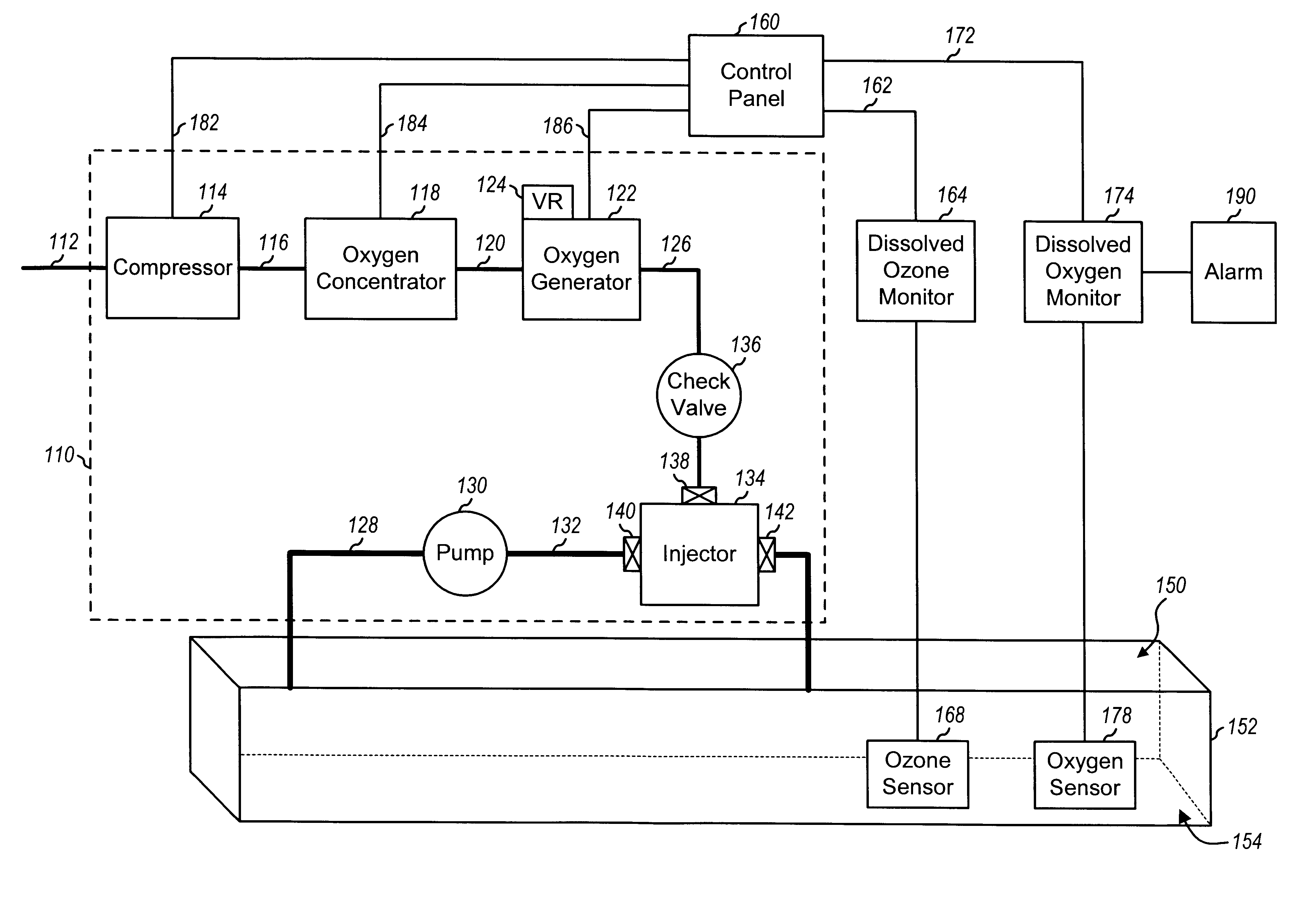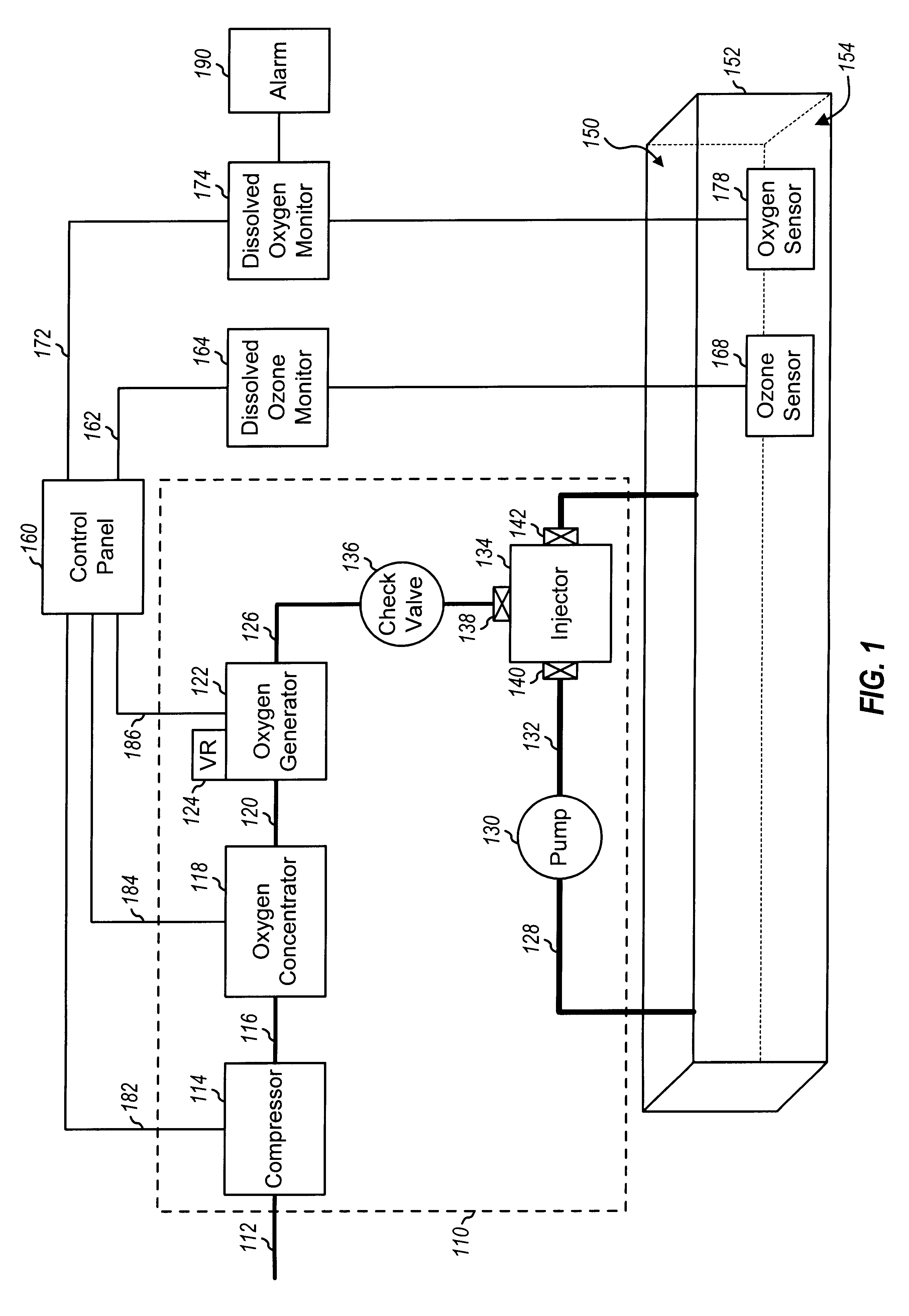Method for inactivating red tide algae and harmful dinoflagellates
a technology of dinoflagellates and inactivating methods, which is applied in the direction of oxidation of water/sewage, treatment control/steering, chemistry apparatus and processes, etc., can solve the problems of fishes (and others) dying due to lack of oxygen, and the oxygen content of depletion
- Summary
- Abstract
- Description
- Claims
- Application Information
AI Technical Summary
Benefits of technology
Problems solved by technology
Method used
Image
Examples
Embodiment Construction
FIG. 1 illustrates one embodiment of an ozone system 100 for inactivating red tide algae and dinoflagellates. Ozone system 100 includes an ozonated subsystem 110, various monitors, a control panel, sensors, and a special net.
Within ozonated subsystem 110, ambient air is provided through an inlet 112 to a compressor 114. It is well known in ozone generation that drier air and higher oxygen concentration in the air result in more ozone being produced. Therefore, it is advantageous to control the moisture content of the incoming air by controlling the temperature of the air. This is accomplished by passing the ambient air through compressor 114. Compressor 114 can also be a conventional air conditioning unit. The dried and cooled air is then passed through a line 116 to an (optional) oxygen concentrator 118 that separates nitrogen from oxygen. Oxygen concentrator 118 increases the oxygen concentration of the air (i.e., possibly from 20% to 80-90%). Compressor 114 and oxygen concentrato...
PUM
| Property | Measurement | Unit |
|---|---|---|
| concentration | aaaaa | aaaaa |
| oxygen threshold | aaaaa | aaaaa |
| ozone concentration | aaaaa | aaaaa |
Abstract
Description
Claims
Application Information
 Login to View More
Login to View More - R&D
- Intellectual Property
- Life Sciences
- Materials
- Tech Scout
- Unparalleled Data Quality
- Higher Quality Content
- 60% Fewer Hallucinations
Browse by: Latest US Patents, China's latest patents, Technical Efficacy Thesaurus, Application Domain, Technology Topic, Popular Technical Reports.
© 2025 PatSnap. All rights reserved.Legal|Privacy policy|Modern Slavery Act Transparency Statement|Sitemap|About US| Contact US: help@patsnap.com


